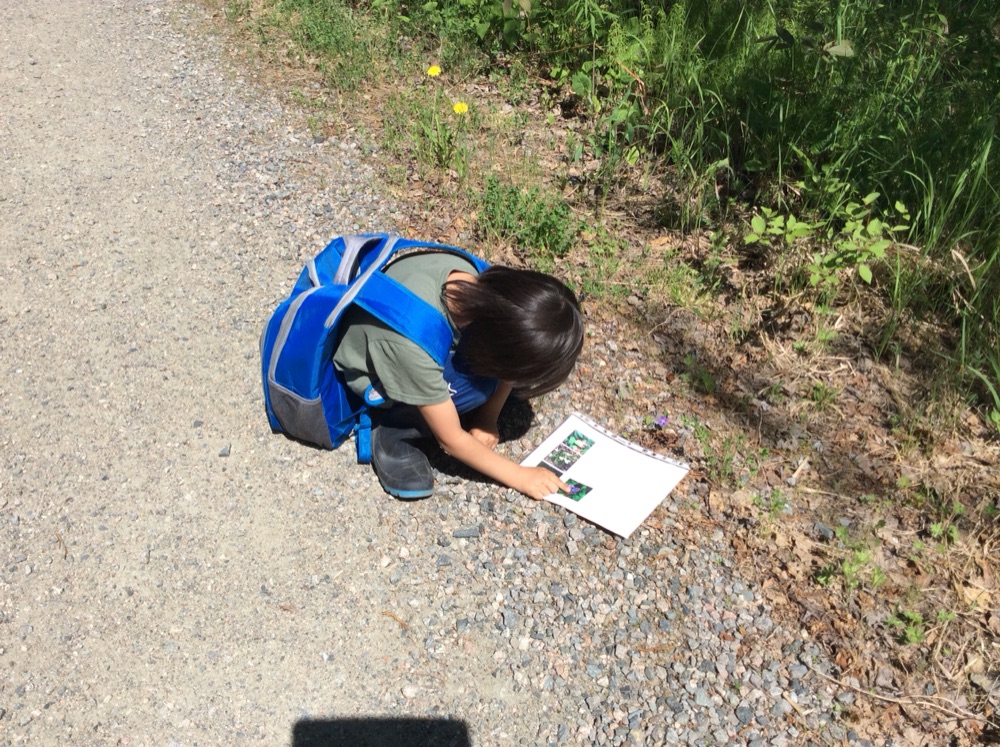The Plants Around Us
Early Years (Age 3 – 6)
Curriculum Goal
Kindergarten: Observation and identification of living things in the natural environment
Communicate with others in a variety of ways:
- 1.5: Use language in various contexts to connect new experience with what they already know (DLMB, PSI)
- 1.7: Use specialized vocabulary for a variety of purposes (DLMB, PSI)
Use processes and skills of an inquiry stance:
- 13.3: Select and use materials to carry out their own explorations (PSI)
- 13.4: Communicate results and findings from individual and group investigations (PSI)
Demonstrate an awareness of the natural and built environment
- 14.1: Ask questions about and describe some natural occurrences, using their own observations and representations (DLMB)
- 14.2: Sort and classify groups of living and non-living things in their own way (PSI)
- 14.3: Recognize, explore, describe and compare patterns in the natural and built environment (PSI)
Express their responses to a variety of forms:
- 21.5: Express their responses to visual art forms by making connections to their own experiences or by talking about the form (DLMB)
Use technological problem-solving strategies:
- 24.5: Communicate and record results and findings either individually or in groups (PSI)
Demonstrate an understanding of the natural world and the need to care for and respect the environment:
- 29.4: Participate in environmentally friendly experiences in the classroom and the schoolyard (BC)
Context
- Students search for and identify plants (i.e types of trees, flowers) in the outdoor environment.
Materials
- Plant and Landmark Identification Guide
- Mine Centre P.S. Example Guide (Appendix A)
- Examples for purchase from The University of Guelph Arboretum
- Basic diagram of the parts of a plant worksheet
Lesson
Using the Plant Picture Identification Guide, students identify the types of plants they observe.
Suggest they use their problem-solving skills to match the name of the plants in the guide to the plants they see around the outdoor classroom.
Ask groups of students to share the types of plants they have been able to identify.
How many different kinds of plants did students find?
What commonalities do they see between plants? What differences?
Closure: Students draw any plants they find particularly interesting. Ask them why the plant was chosen. If possible, scribe their reasoning back in the classroom.

Look Fors
- What strategies did students use to help match the plants they saw in the guide?
- Did students draw out connections with the name of the plant and its physical features?
- If students saw two similar plants, ask how they problem-solved to select which plant matched which picture in the guide.
Extension
- Introduce the main parts of a plant to students (i.e. petals, flower, stem, leaves, roots) using the basic diagram of the parts of the plant worksheet. Then ask them to identify these main plant features in the real plants they see around them.
